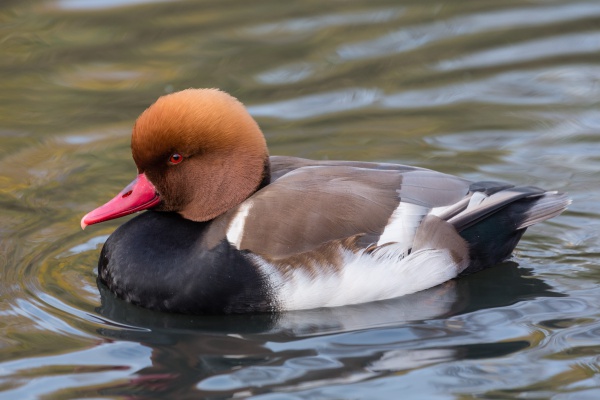Facts About Red-crested pochard
The red-crested pochard is an unmistakably distinctive duck, characterized by its unique appearance. Bearing a scientific name that alludes to its "duck" and "golden-red" features, this large diving duck commands attention in the avian world. These birds breed in the lowland marshes and lakes of southern Europe, extending their range to Central Asia and Mongolia. During the winter, they migrate to the Indian Subcontinent and Africa, with some northern populations traveling as far south as North Africa.
Male red-crested pochards are particularly striking with their rounded orange heads, red bills, black breasts, white flanks, brown backs, and black tails. Females, conversely, exhibit a more muted palette, being primarily pale brown with darker backs and crowns, and whitish faces. During the eclipse phase, males resemble females but retain their distinctive red bills.
These ducks are notably social and tend to congregate in large flocks during the winter months, often mingling with other diving ducks. Their diet consists mainly of aquatic plants, which they obtain by diving or dabbling. Interestingly, they exhibit a higher tendency to upend for food compared to other diving ducks.
In terms of vocalizations, male red-crested pochards emit a wheezing call, while females produce hoarse calls. They construct their nests by lakesides, concealed among vegetation, and typically lay between 8 to 12 pale green eggs.
In the British Isles, their status remains somewhat ambiguous. Some individuals are believed to be escapees from captivity or deliberate releases, whereas others might be natural visitors. Regardless of their origins, they have established a thriving feral population, particularly in areas of England such as Gloucestershire, Oxfordshire, and Northamptonshire.
The red-crested pochard is also included in the Agreement on the Conservation of African-Eurasian Migratory Waterbirds (AEWA), highlighting its significance in conservation efforts.

 Kyrgyzstan
Kyrgyzstan